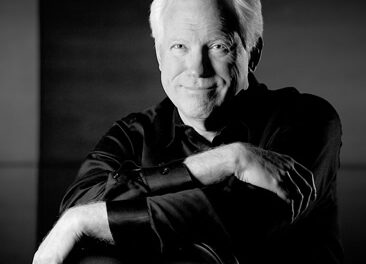The Charlotte Symphony continued its 2019-20 season on Nov. 22 with a three-piece program featuring Dvořák’s New World Symphony. Though occasionally lacking in precision, the orchestra performed with power to a full audience in the Belk Theater at the Blumenthal Performing Arts Center, led by guest conductor Ilyich Rivas.
Rivas is a Venezuelan-American who, at 26, is already in his tenth professional year of conducting: Rivas made his professional debut at 16 in front of the Atlanta Symphony Orchestra. Rivas grew up around orchestras: His father, Alejandro Rivas, is also a conductor, and Rivas was brought to concerts and rehearsals as a child, starting conducting lessons at as early as six years old. Rivas has now conducted a host of mid-sized orchestras throughout the world, including the Orchestre National de Lyon, the Auckland Philharmonia, and the Minnesota Orchestra, among others, as well as for larger orchestras such as the London Philharmonic. He is a recipient of the Bruno Walter Prize, the Prix Julius Baer and a Peabody Conducting Fellowship. This evening, Rivas conducted the orchestra with spirit, moving through three dramatic and romantic pieces by Schumann, Brahms, and, of course, Dvořák.
The orchestra opened with Schumann’s Overture to Manfred, the tense and exciting beginning to Schumann’s Manfred, a score written to portray Lord Byron’s 1817 dramatic poem of the same name. Lord Byron’s poem follows the guilt-stricken and self-tortured Manfred, who broods and awaits death, self-isolating in the Alps and addressing the supernatural with impotent outrage (“back, you baffled fiends!”). Schumann’s music mirrors this melodrama with running strings, groaning woodwinds, and blaring horns.
Brahms’ Variations on a Theme by Haydn (1873) followed the Schumann. Exploring Haydn’s simple and elegant melody entitled “St. Anthony Chorale,” Brahms created nine brief variations (including a finale) that range from a lovely and sweet Grazioso to commanding and rhythmically complex movements, such as the Andante and Vivace sections.*
Both the Schumann and the Brahms demand precision in rhythm and tempo, along with freedom in dynamics and accentuation. Though the orchestra had several fulfilling moments, and conductor Rivas was conducting with energy and expression, there were moments where conductor and musicians appeared out of sync. A few times, especially in the Manfred, it appeared as if the musicians were hesitant in their relationship with Rivas; Rivas would take an audible breath and his arms would grow as to introduce an upcoming swell or crescendo in the music, but the orchestra did not respond with the power that Rivas was attempting to draw out. There were also a few moments where musicians did not begin notes together, where individual instruments could be heard beginning as opposed to one succinct orchestral sound, which one might also attribute to a lack of identification with the guest conductor.
However, these inconsistencies were made up for by the concluding Dvořák, a piece that the orchestra has played numerous times (and which, obviously, always brings a crowd).
Dvořák’s New World demands drama and strength as well as grace and sentiment, and the orchestra was successful in their portrayal. A particularly effective moment came towards the middle of the first movement, at the end of the flute solo where the orchestra picks up the flute melody; Rivas and the orchestra took a subtle rallentando, pulling the audience in in anticipation of the resolution.
Dvořák’s New World is a gorgeous and invigorating piece of music, and the orchestra played with power. The melodies impress upon the audience, at times jolting them suddenly, at others, soothing them gently. The melodies linger too: Walking out the door of the theater, you could hear the ghosts of Dvořák being hummed or whistled triumphantly or sweetly by today’s “New World” citizens.
This program will be repeated on Saturday, November 23. See our sidebar for details.
*The theme is now thought not to be by Haydn, but Brahms’ score remains indisputably an orchestral tour de force.












